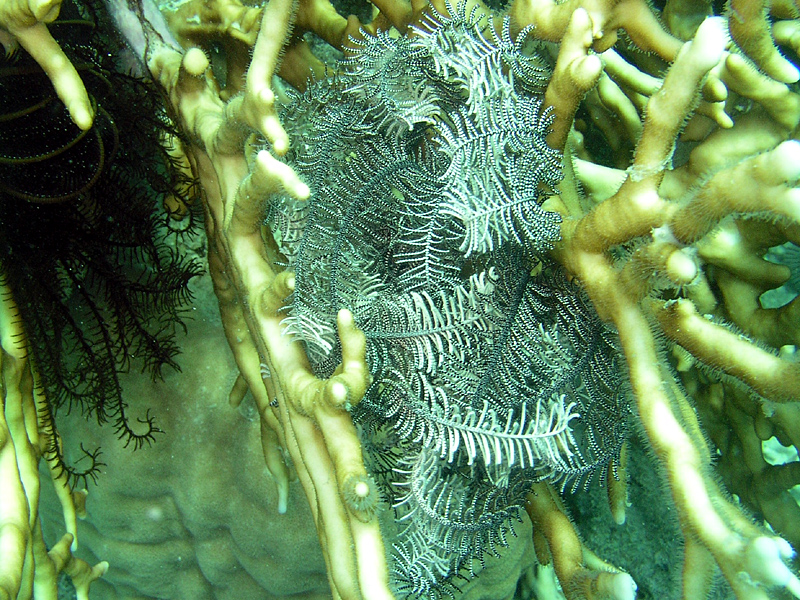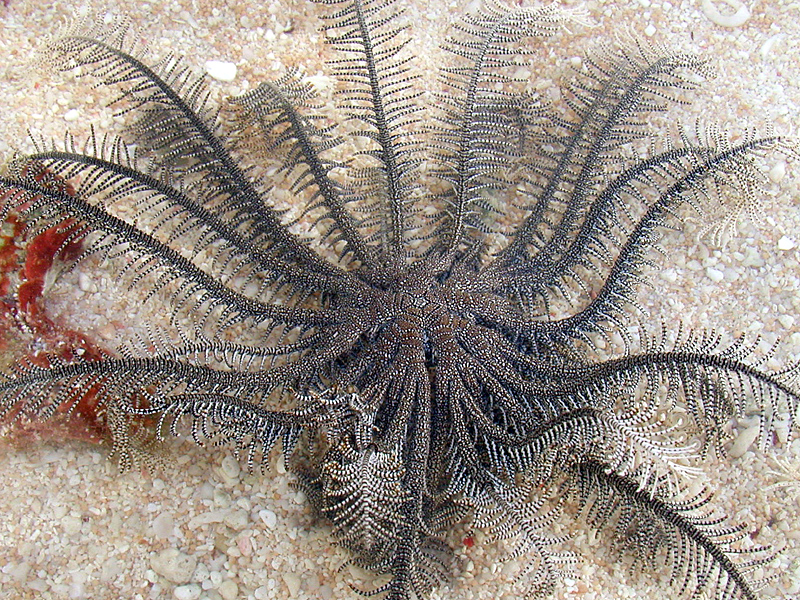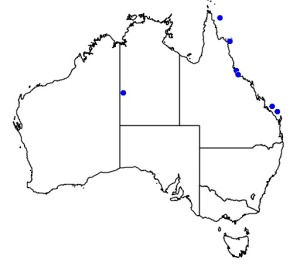
©Lyle Vail and Anne Hoggett: Clarkcomanthus mirabilis (right) in a typical living position. This is the most common colour pattern at Lizard Island.

©Lyle Vail and Anne Hoggett: Pan shot of the underside of Clarkcomanthus mirabilis. The speckled colour pattern, small centrodorsal plate and lack of cirri is distinctive.

©Lyle Vail and Anne Hoggett: The underside of an unusual mostly-white specimen of Comanthus mirabilis.
Distinguishing features
Comasterids are distinguised from all other featherstar families by having terminal segments of the oral pinnules modified to form a comb. Comasterids a also have a distinctive "feel" due to well developed hooks on most pinnules that cause them to cling like velcro.
Adults have up to 40 rather stiff arms and no cirri. The centrodorsal plate is characteristically small in this species, compared to the surrounding radial plates.
Most specimens are rather beautifully mottled brown and white. Very large specimens, which have been found only rarely, are mottled red and white. The photo below shows an unusual mostly-white specimen.
Size
- Size data has not been obtained.
Depth range
- Depth range data is not yet available.
Synonyms
Distribution
Distribution and habitat preferences
Clarkcomanthus mirabilis is semi-cryptic, living entwined in branching corals.
Clarkcomanthus mirabilis is currently quite common at Lizard Island, both in the lagoon and around the perimeter. However, field notes indicate that the species was not common in the early 1980s.
Web resources
References
- Rowe, F.W.E., A.K. Hoggett, R.A. Birtles and L.L. Vail (1986). Revision of some comasterid general from Australia (Echinodermata: Crinoidea), with descriptions of two new genera and nine new species, Zoological Journal of the Linnean Society, 86: 197-277. LIRS catalog number 198.



